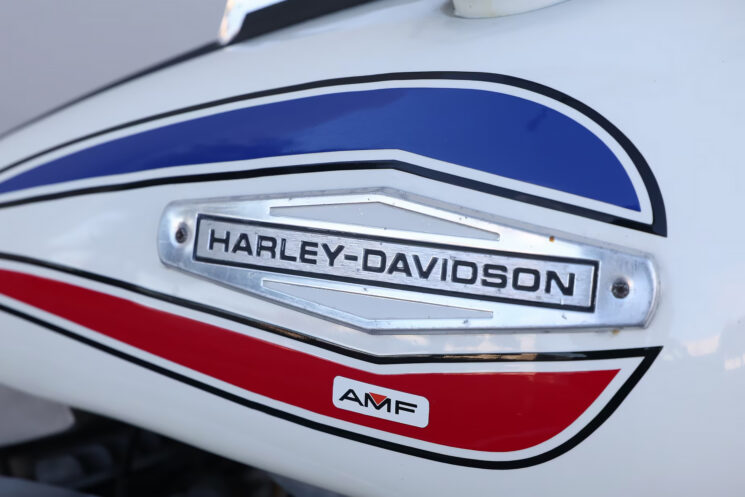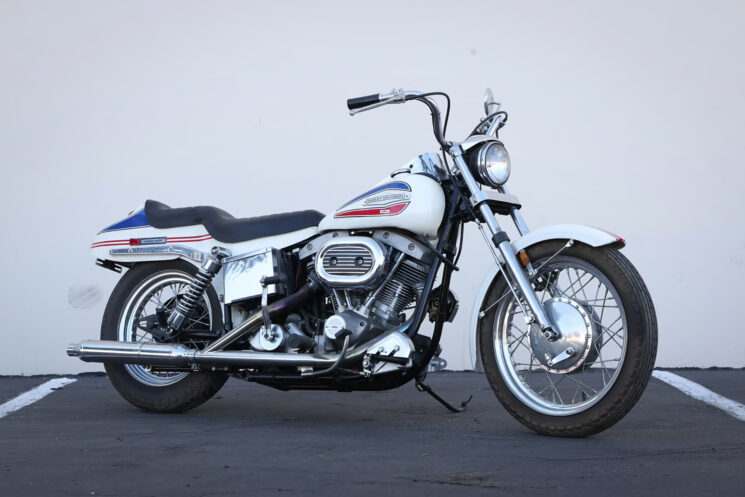
When it comes to Harley-Davidson design, the 1971 FX Super Glide is one of those bikes that people either love, or love to hate. It was Harley’s first attempt at a factory custom, mixing the sporty vibe of the XL series with the heavyweight punch of the FL models. But what really stole the show—for better or worse—was the boat tail seat. Bold, brash, and undeniably 1970s, it’s a design that’s as polarizing today as it was back then.
From the Mind of Willie G. The idea for the FX Super Glide emerged during a transitional period for Harley-Davidson. The 1960s had been tough for the company, with increasing competition from British and Japanese manufacturers. Willie G. Davidson, grandson of one of the company’s founders, sought to reinvigorate the brand with a bike that appealed to the burgeoning custom culture.
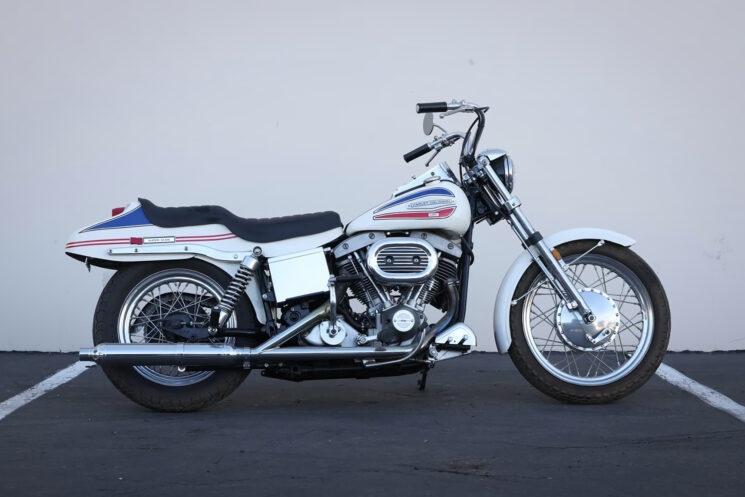
In practice, the FX Super Glide was little more than a stripped-down FL big-twin equipped with the front fork, wheel, brake and headlight from an XL Sporty. An all-American paint scheme and buckhorn bars gave it the look of a real freedom machine, but Willie’s final design mandate would come to define the motorcycle.
Modeled loosely after the rear ends of classic cafe racers and the tailfins of 1950s American cars, the fiberglass boat tail was intended to evoke speed and sophistication. The piece first appeared as an optional extra for the XL Sportster in 1970, but it didn’t sell well. Where the boat-tail Sporty looked ad hoc cafe, it brought a completely different look to Super Glide as a bold bodyworked roadster, certainly deserving of its nickname ‘the night train.’
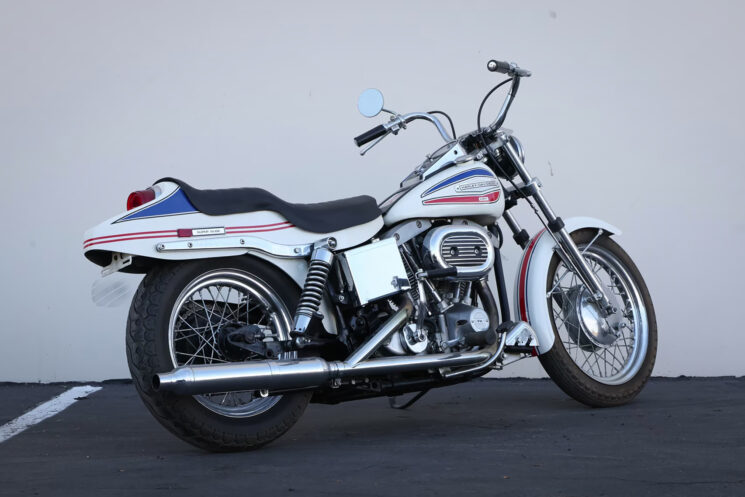
Straight to the Attic Despite its audacity, the boat tail seat landed with a thud for many Harley purists. Its swooping, bulbous shape clashed with the otherwise muscular lines of the Super Glide, giving it an almost cartoonish silhouette. In an era when Harley’s core audience favored chrome-laden baggers or stripped-down bobbers, the boat tail looked like an overstyled gimmick, and countless boat tails found their final resting place in attics and garage shelves.
Harley chalked the boat tail experiment up as a failure after 1971, leading us to wonder if it could have been refined some for ’72. That first year FX captured the freewheeling spirit of the early 1970s, a time when American culture was in flux. Psychedelic rock ruled the airwaves, leisure suits were in and flamboyance was the order of the day. In that context, the FX Super Glide’s outlandish look made perfect sense. It wasn’t just a motorcycle; it was a rolling symbol of freedom.
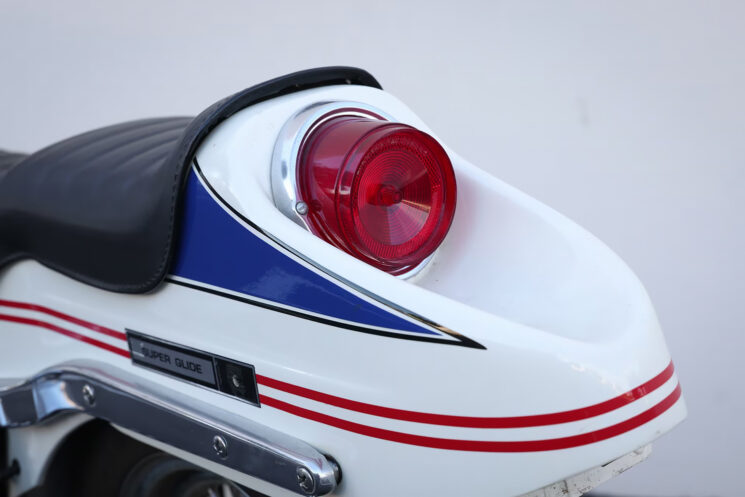
Triumphant Return to the Fold Today, the FX Super Glide and its boat tail seat have undergone a reevaluation. What was once derided as gaudy now holds a certain nostalgic charm. Enthusiasts and collectors view the bike as a snapshot of a pivotal moment in Harley-Davidson’s history when the company took a bold gamble on style and innovation, with generations of succeeding FX models to its credit.
Clean boat-tail Super Glides regularly fetch impressive sums at auction these days. Depending on condition and originality, prices can range from $15,000 to $30,000, with particularly pristine models commanding even higher bids. The boat tail, once a liability, is now a coveted feature that ensures a return several times greater than a standard Super Glide of the era.
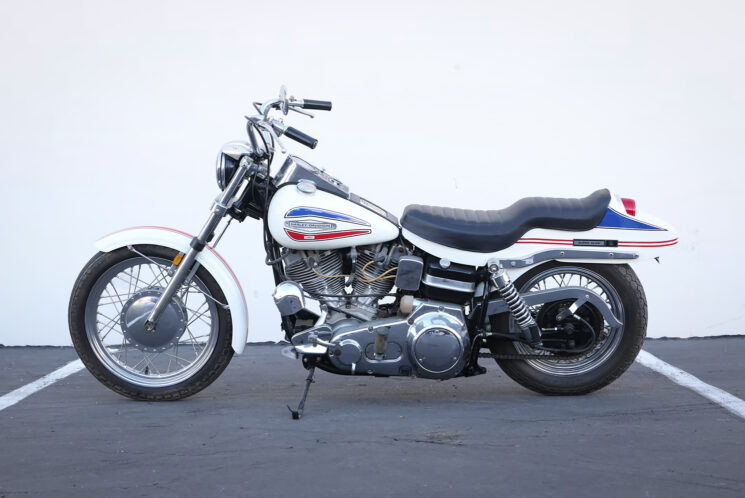
One of a Precious Few Harley produced just 4,700 examples of the 1971 FX Super Glide before the boat tail got the boot, and there’s no telling how many have been chopped up or otherwise ruined. Crossing the block on January 31 at Mecum’s Las Vegas 2025 motorcycle sale, Lot F126 is one of these precious few.
There are certainly nicer Super Glides, as this one wears just enough patina for the 34,305-mile odometer readout to make sense, but we wouldn’t put it past a repaint somewhere along the line. Beyond that, many original details look correct, like the points cover, controls and exhaust, while the battery box and air filter housing appear incorrect. Selling at no reserve, this 1971 FX will probably sell in the middle 20s.
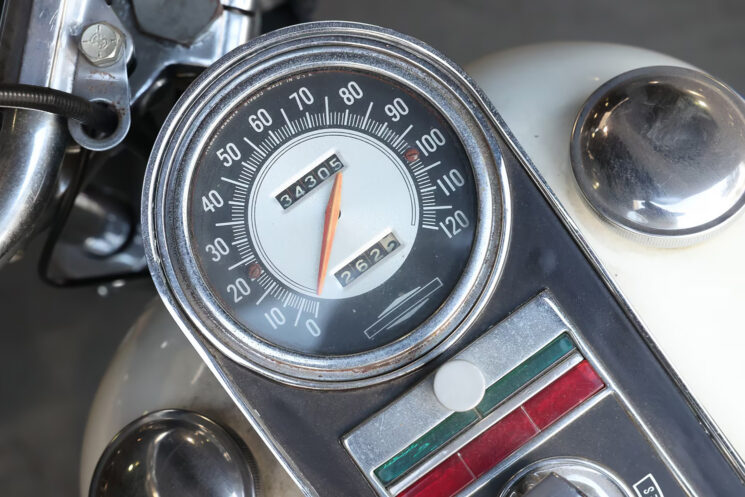
The boat tail Super Glide is one of those bikes that’s easy to trash talk from your keyboard, but hard to hate in person. Its stature and proportions are completely different when it’s leaned over in front of you, and you find yourself warming up to what Willie G. was trying to accomplish. As an edgy rolling symbol of the 1970s, the ’71 Super Glide’s quirky design ensures its legacy as one of the most memorable—and polarizing—motorcycles ever to roll out of Milwaukee.
Source: Mecum.
